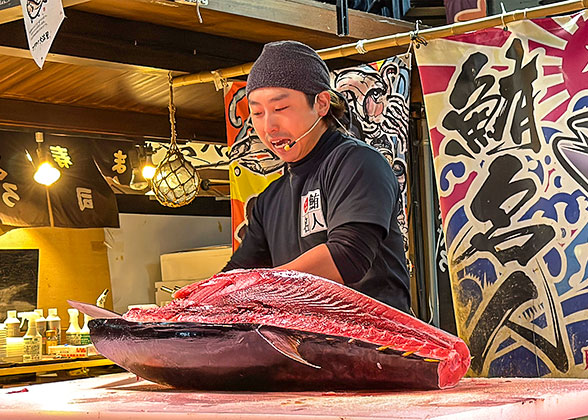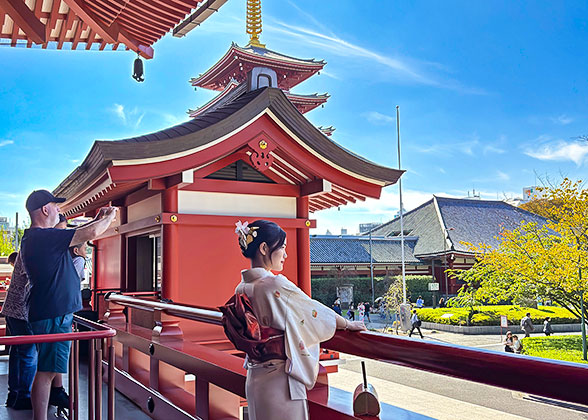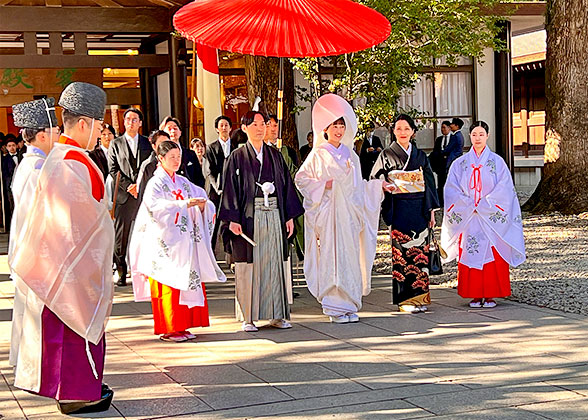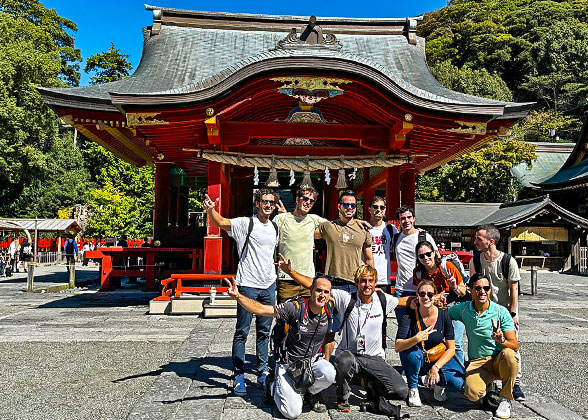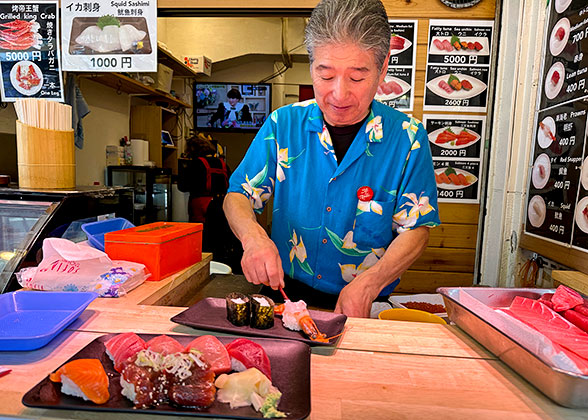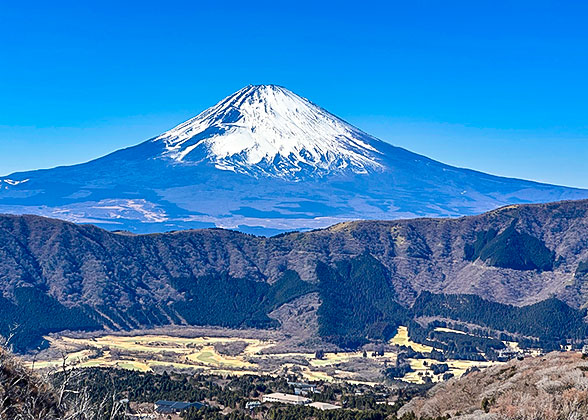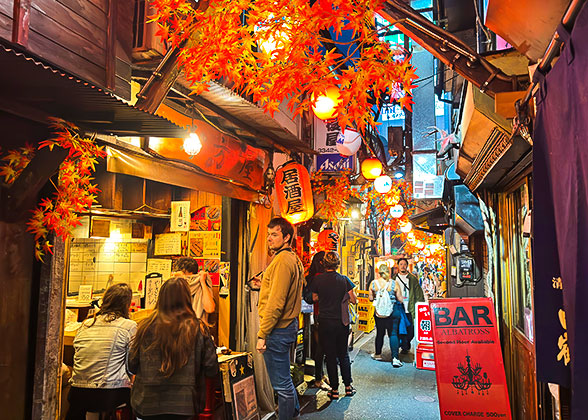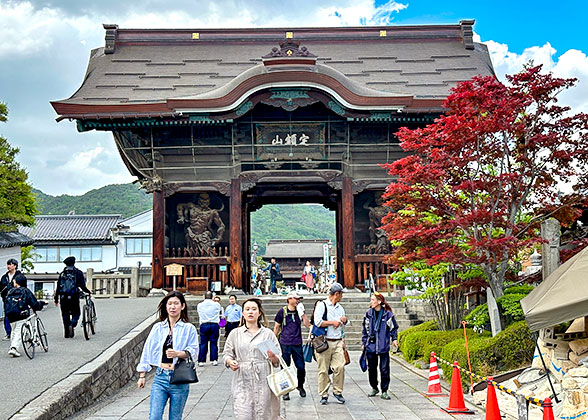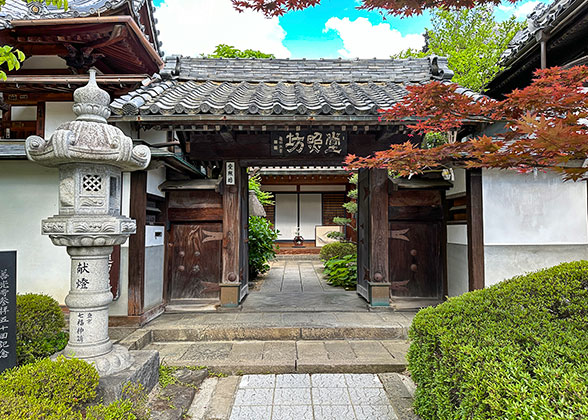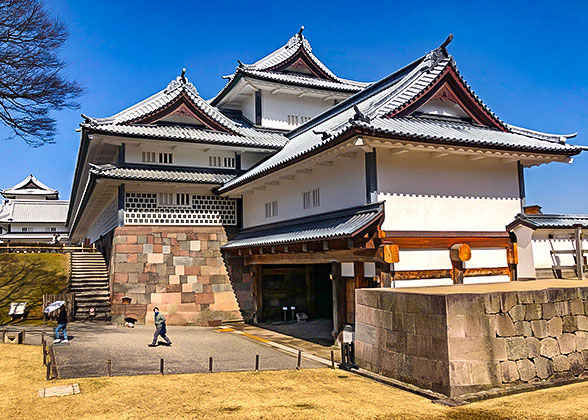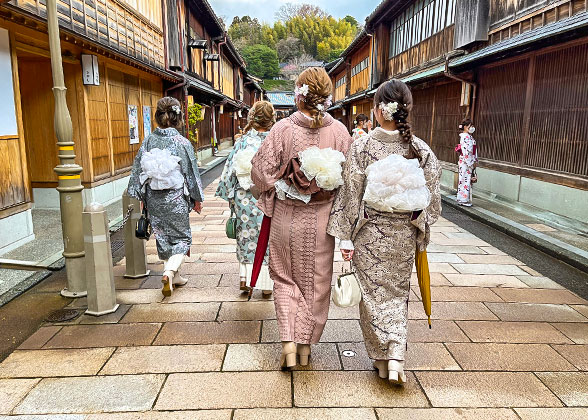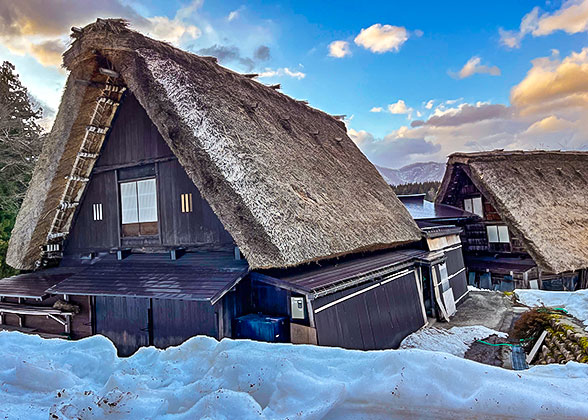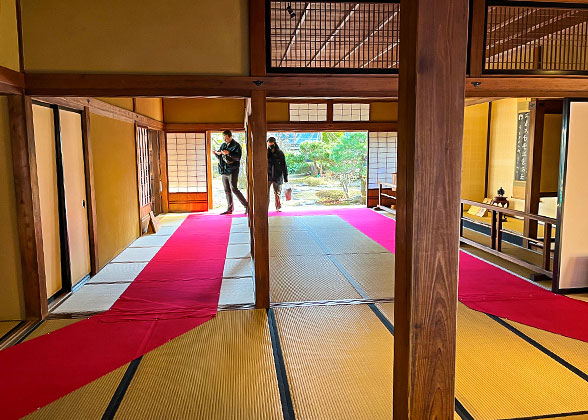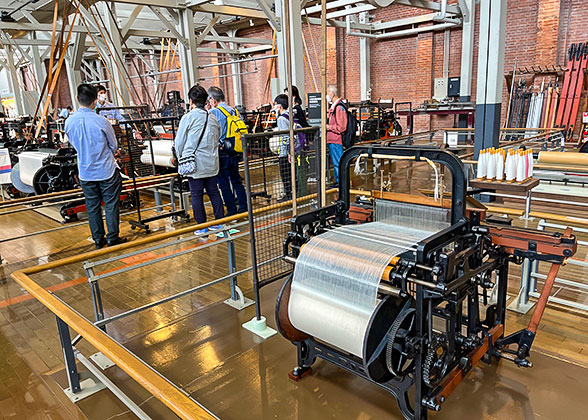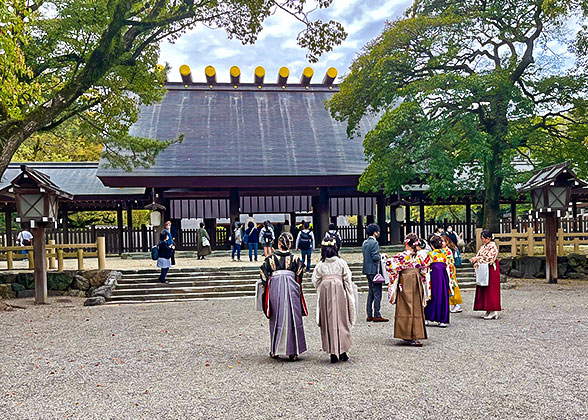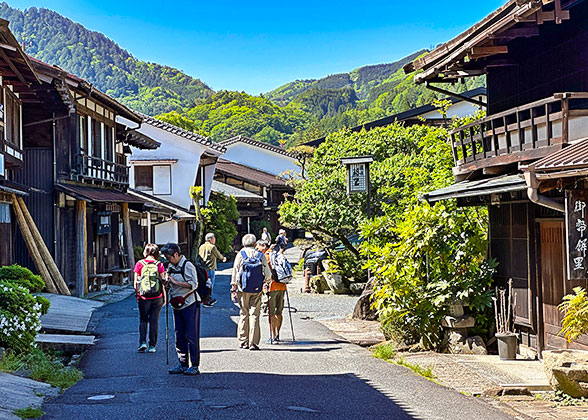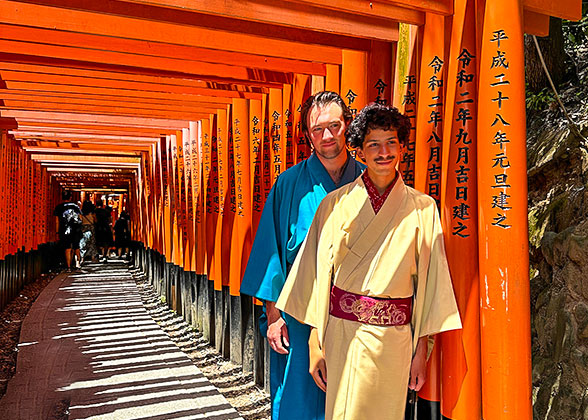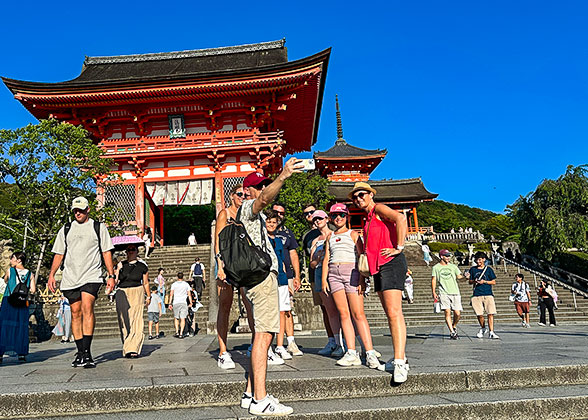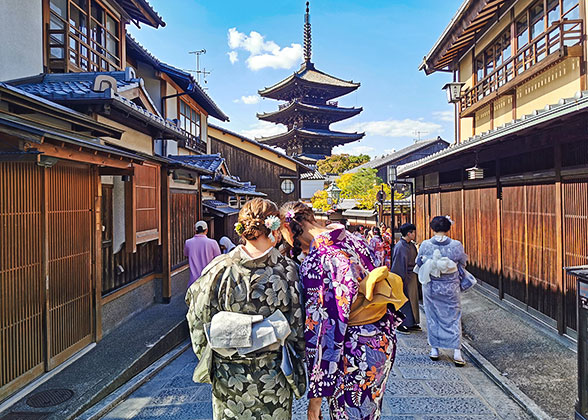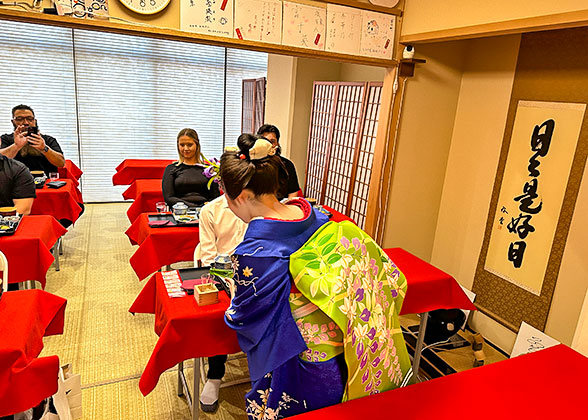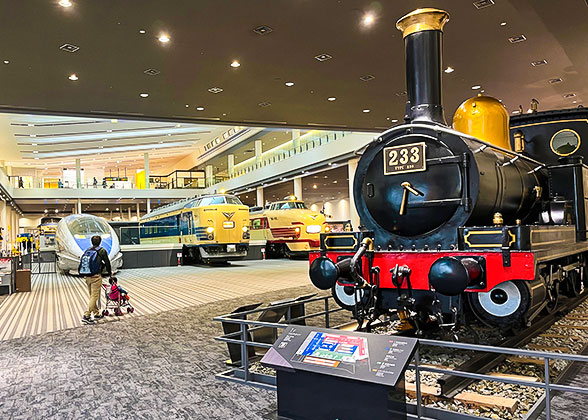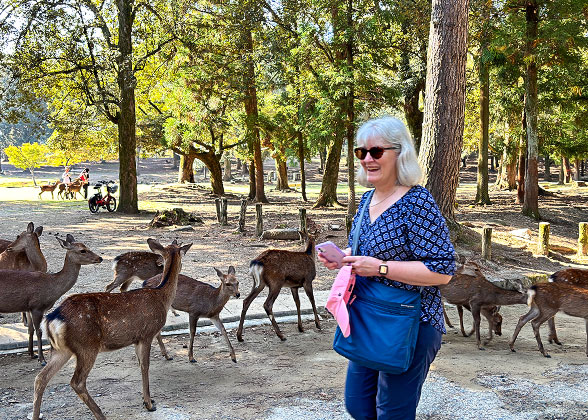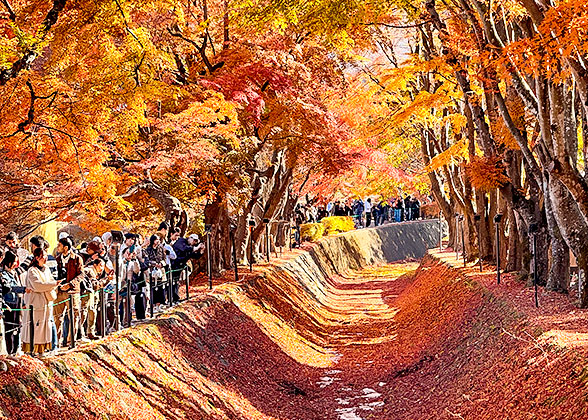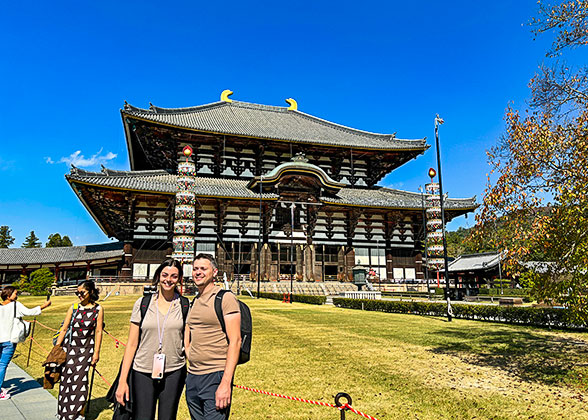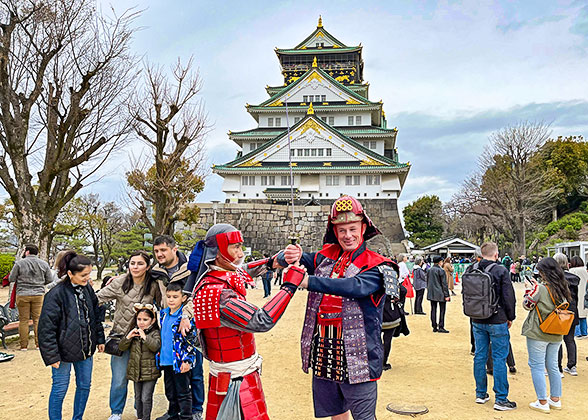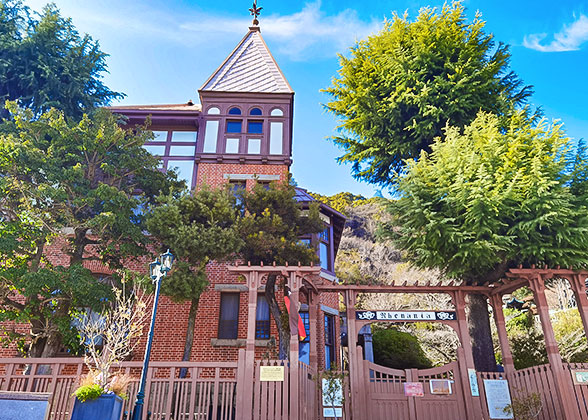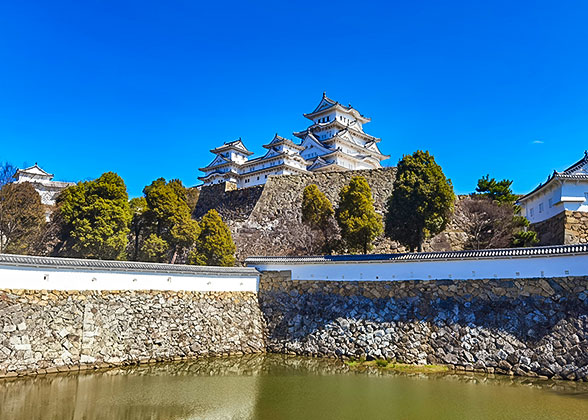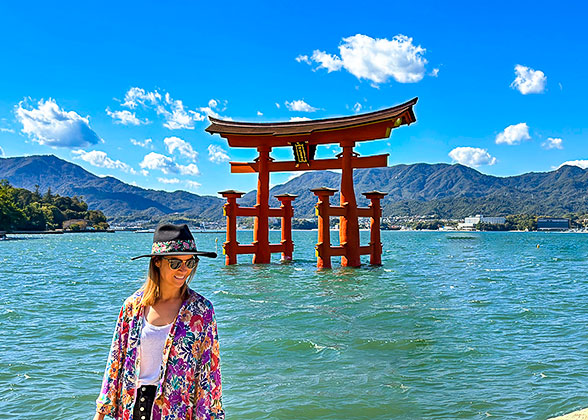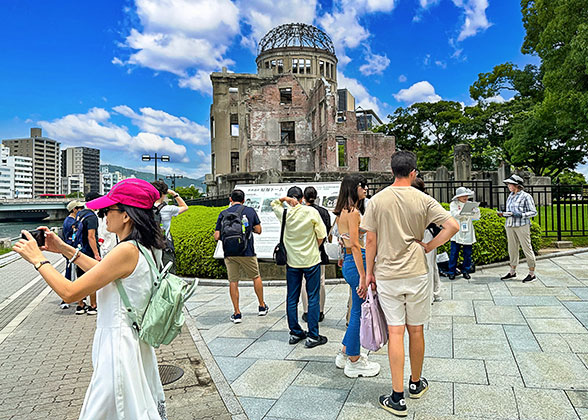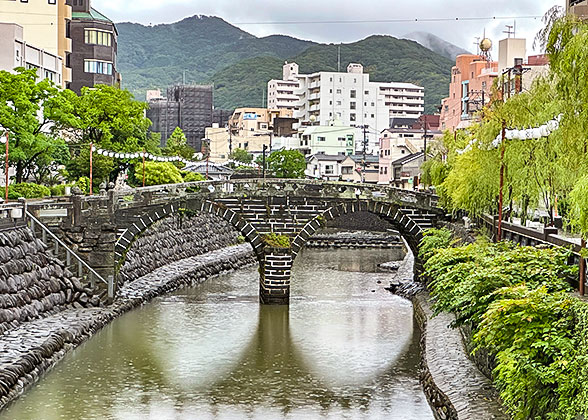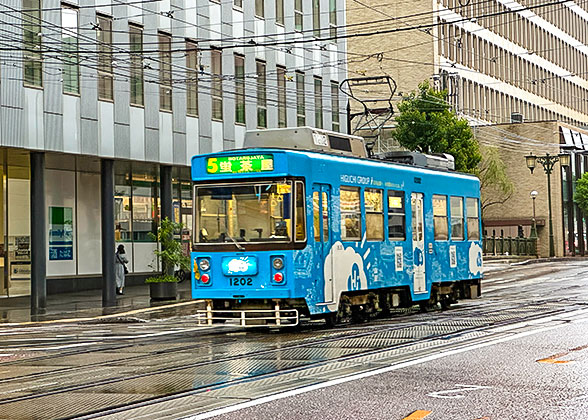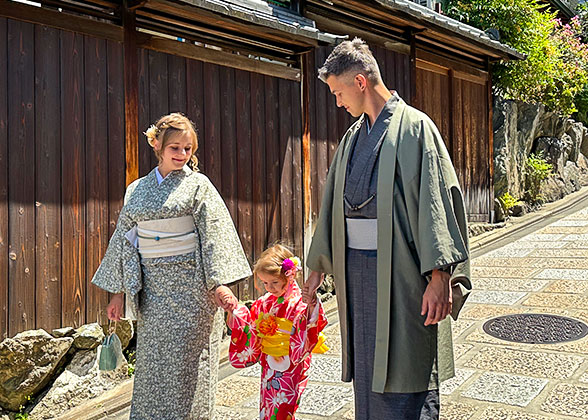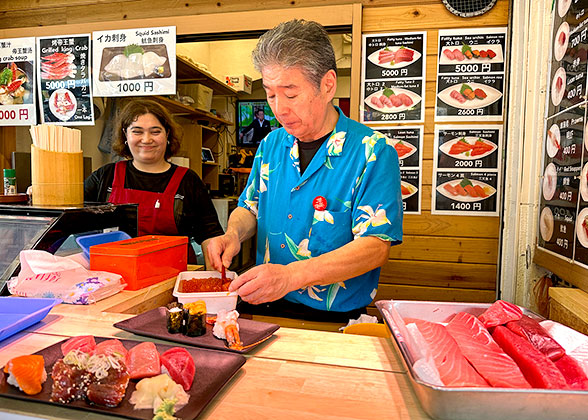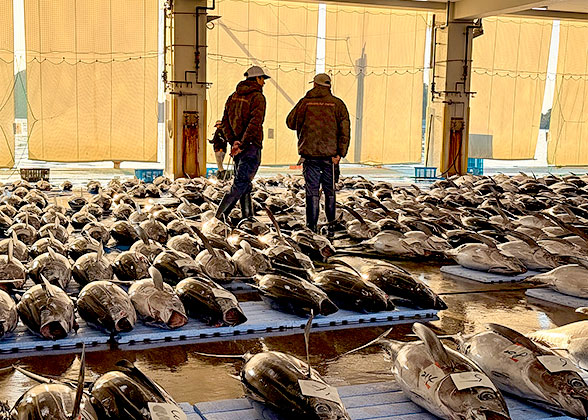Day 1: Arrive in Tokyo; Airport Pick-up
Your choice of this 3-week tour itinerary of Japan would be a testament to your vision and love of travel. When your flight lands in Tokyo, our English-speaking assistant will be ready at your service. The assistant will usher you to the shared shuttle and help you board the car which runs directly to the hotel we have handpicked for you, with a great location and superb service.
Accommodation: Hotel Century Southern Tower (4 stars) in Tokyo
|
Day 2: Tokyo: Visit Meiji Jingu Shrine, National Museum, Senso-ji Temple
Meet our guide in the hotel lobby and start the day by visiting the Meiji Jingu Shrine, which is dedicated to Emperor Meiji and Empress Shoken. Pass through the huge torii at the entrance and follow the left-in and right-out rule like any other tourist, as the middle road is reserved for the deities. You might happen to see a Shinto wedding here, in a very traditional and cultural way, which is expensive, USD 25,000 for a wedding attended by 40 people. Next, we’ll visit the Tokyo National Museum. Take a close look at a variety of artifacts that have survived thousands of years of history, including paintings, pottery and carvings from Japan and other Asian countries, as well as distinctive kabuki costumes and samurai armors, complemented by helpful cultural notes and stories narrated by our guide. ► Tip: Visit the Fukagawa Edo Museum instead if it happens to be a Monday when the museum is closed. At noon, visit the Tsukiji Outer Market and get amazed by a variety of food shops and authentic sushi and teppanyaki restaurants here. Next, let’s delve into the Asakusa area. Walk through the magnificent Kaminarimon Gate leading to the bustling Nakamise-dori Street, and visit the Senso-ji Temple at the end of the street. At the big incense burner in front of the main hall, remember to do like the locals to bath your head and body with the incense smoke, which is said to dispel diseases and eliminate disasters. Meiji Jingu Shrine Tuna Dissection Show
Looking east from the Senso-ji Temple, you can see the towering Tokyo Skytree, which at 634 meters (2,080 feet) is the second tallest man-made structure in the world, after the Burj Khalifa in Dubai. Our guide will take you there, point out the best place to take photos, and give you the tickets. Climb up the tower by yourself to the Tembo Deck at a height of 350 meters (1,148 feet), and enjoy your free time taking in the panoramic view of Tokyo. On a clear day, the Mt. Fuji can be seen in the distance. After enjoying the sunset or night view, please return to the hotel by yourself. It takes 35 minutes and costs USD 2 by rail transit. Please take the Asakusa Line from Oshiage Station (Skytree) for 8 minutes (5 stops) to Higashi-Nihombashi Station, walk 3 minutes west to Bakuroyokoyama Station to change to the Shinjuku Line, ride for 16 minutes (8 stops) to Shinjuku Station, and walk 4 minutes south to the hotel. ► Recommended Restaurant: Kaitenzushi Toriton Solamachi If you want a dinner at Solamachi, the Tokyo Skytree Town, there are also many restaurants offering good food as well as good service. Kaitenzushi (conveyor belt sushi) Toriton is one of those, where sushi made of fresh seafood like oysters, scallops, tunas and abalones are provided. You can serve yourself by taking sushi delivered in front of you via the conveyor belt. Expensing JPY 3,000-4,000 (USD 19-26), you can enjoy a sushi meal to your heart's content. Meals: Breakfast Accommodation: Hotel Century Southern Tower (4 stars) in Tokyo
|
Day 3: Day Trip to Nikko: Tosho-gu Shrine, Chuzenji Lake, Kegon Falls
In the morning, our guide will pick you up from the hotel lobby at 8:00 for an express train ride to Nikko. After 2.5 hours, we will arrive at the Nikko Tosho-gu Shrine for a visit. Part of the Nikko World Heritage Site, it was founded in 1617 AD as a shrine to Tokugawa Ieyasu (1543 - 1616), the founder of the Tokugawa Shogunate. The guide will show you the gorgeous architecture, as well as a variety of ornamental lacquer paintings and sculptures. The most famous wood carving is the Sleeping Cat (Nemurineko), which is on the transom of the cloister at the entrance to the mausoleum of Tokugawa Ieyasu. It is said that the cat is protecting the mausoleum, and its sleeping manner symbolizes world peace. The ‘Three Monkeys’ carved on the storehouses are also very interesting – one covers the eyes, meaning ‘see no evil’; one covers the mouth, meaning ‘speak no evil’; while another covers the ears, meaning ‘hear no evil’. There are actually a total of 16 lifelike monkey carvings, including the most famous three, which together depict the story of one person’s life. Around noon, our guide would be willing to recommend you some popular local restaurants for your self-paid lunch. You can try the genuine yuba soba noodles, accompanied by specialty snacks such as Nikko puddings or Ningyo-yaki sweets. Afterwards, we will travel west by bus via the Irohazaka Winding Road, a thrilling yet scenic mountain path with 48 hairpin turns. Arrive at the Chuzenji Lake for a visit. Formed by volcanic lava eruptions, this is the highest natural lake in Japan. Follow our guide for a hike on the lakeside trails and enjoy the beautiful scenery of the surrounding hills and woodlands. On the east bank of the Chuzenji Lake, the water rushes down into the valley below, forming a waterfall of nearly 100 meters (328 feet) high, which is the famous Kegon Falls. ★ Privilege of Our Guests: Unlike other tour operators who only take you to see the whole waterfall from a free viewing platform at the top, our guide will also take you down the elevator to the exclusive viewing platform (paid by us), which will give you an even more impressive view of the waterfall from below. Finally, the guide will escort you back to your hotel in Tokyo, arriving at around 20:00. Meals: Breakfast Accommodation: Hotel Century Southern Tower (4 stars) in Tokyo
|
Day 4: Tokyo-Hakone Tour with Mt. Fuji, Owakudani Valley, Lake Ashi Cruise
Today, we’re going to visit the iconic sight of Japan, Mt. Fuji. After breakfast, your private guide will meet you at the hotel and join you on a bullet train ride to Odawara. From there, travel along the Hakone mountain railway and ropeway to visit the Owakudani Valley. Then, keep riding the ropeway to reach Lake Ashi, where we’ll embark on a 20-minute sightseeing cruise on the blue waters. You can relax and quietly gaze at Mt. Fuji in the distance while finding the best angles for photos. Finally, your guide will escort you back to your hotel in Tokyo by express train. ★ Unique Service: Flexible Day to Visit Mt. FujiFrom the 2nd to the 4th day of your trip, you can visit the Mt. Fuji on any day depending on the weather forecast. This is our exclusive service, considering the fact that the Mt. Fuji is visible in just 80 days a year due to the rainy or cloudy weather. Our service makes it possible for you to discuss with our guide and choose a sunny day with good visibility. Please see the ‘Comparison with Our Competitors’ at the bottom, or contact us for details. ► Things to Know: 1. Feel free to inform us whether you prefer a fixed date or a flexible date to visit Mt. Fuji. For a flexible date, please be ready for no-seat travel with non-reserved train tickets, as reserved tickets require a 1-month advance booking. 2. We’ll try our best to arrange your Fuji visit on a clear day, but please understand that this is not a promise. Even if you change the date, you may not be able to see the mountain clearly due to the changing weather .Meals: Breakfast Accommodation: Hotel Century Southern Tower (4 stars) in Tokyo Mt. Fuji Omoide Yokocho, Shinjuku
|
Day 5: Tokyo - Nagano: See Snow Monkeys in Hot Spring
We will reserve the train tickets from Tokyo to Nagano for you in advance. In order to have enough time to visit Nagano, we’ll arrange for you a train leaving early, at around 8:00. After an early breakfast, please pack your luggage and make your way to Tokyo Station in 20 minutes. Walk 7 minutes north from your hotel to Shinjuku Station to take the Chuo Line for 13 minutes (4 stops) to Tokyo Station. Here, please take the 1.5-hour bullet train ride to Nagano. Our local guide will meet you at Nagano Station. Walk 1 minute to the hotel to drop off your luggage, followed by a bus ride of about 1 hour to the Jigokudani Valley parking lot. ★ See Snow Monkeys Soaking in Hot SpringThis is the most distinctive feature of Nagano, and the highlight of your visit today. From the parking lot to the Jigokudani Snow Monkey Park, there is a mountain path that is slippery with snow in winter and muddy in other seasons. It can only be reached by foot, which takes half an hour. Please remember to wear non-slip hiking shoes. There is also a small shop to rent clothes and shoes at the entrance. When you see the monkeys in the park enjoying themselves in the hot springs, you will feel the long trek is worth it. Besides the hot spring area for tourists, there is a hot spring for monkeys. It would be fun to see the monkeys walking freely through the tourist crowd and into the pool. Bathing in hot springs has become a regular part of their happy life. You can enjoy watching the monkeys and taking pictures, but note that touching and feeding are not allowed. After an enjoyable stay in the park, head back to downtown Nagano with the guide. If there is still time, we will visit the Zenko-ji Temple or the Nagano Prefectural Art Museum. At about 18:00, our guide will escort you back to the hotel. ► Tip: If you are a skier, you can contact our travel consultants to add a free day for you in nagano in snow season, to have fun in the Hakuba Cotina Ski Resort. Meals: Breakfast Accommodation: Hotel Metropolitan Nagano (4 stars)
|
Day 6: Nagano to Kanazawa: Visit Kenroku-en Garden & Kanazawa Castle
After breakfast, pack your bags and walk 1 minute to Nagano Station and take the bullet train for 1.5 hours to Kanazawa (train tickets reserved and included). Upon arrival, our Kanazawa guide will meet you at the train station and accompany you to the hotel to drop off your luggage before we get to know the city. We’ll start with the classic Kenroku-en Garden, one of the three most famous gardens in Japan. Enjoy this beautiful garden, which dates back to the mid-17th century, with rivers and ponds running through and rockeries and pavilions everywhere. Next, walk to the nearby Kanazawa Castle Park, famous not only for its 16th century castle, but also for the extensive green spaces and gardens that surround it, which is a great place for viewing cherry blossoms during spring and red maple leaves in autumn. At noon, head to the bustling Omicho Market, which is alive with a dizzying array of food stalls. If you like, you can try the local cuisine on the advice of the guide. Kanazawa Castle Park Higashichaya Old Town
In the afternoon, we will take a walk in the Higashichaya Old Town, a former geisha district that has produced many famous geishas, traditional Japanese female performers. Now, you can see antique flagstone streets lined with two-story old wooden buildings, many of which are traditional tea houses. You can wander around the shops and buy Kanazawa’s specialty gold leaf handicrafts if you like. Finally, the guide will take you to the Nagamachi Samurai District. Look at the place where the samurais and their families once lived, with original earth walls and stone roads remaining intact. The guide will finally take you back to the hotel. Meals: Breakfast Accommodation: ANA Crowne Plaza Kanazawa (4 stars)
|
Day 7: Kanazawa - Shirakawa-go - Takayama
This morning, our guide will accompany you on a 1.5-hour express bus ride from Kanazawa to Shirakawa-go. ★ Shirakawa-go Village: A Must-Visit World Heritage SiteHidden in the mountains of Gifu and Toyama prefectures, this historic village has its own unique charm. For a long time, the village was cut off from the outside world because of its location deep in the mountains, but the people here managed to survive and sustain themselves by planting mulberry trees and raising silkworms to trade the raw silk. Thanks to its isolation, Shirakawa-go remains largely pristine, with dozens of antique houses. Take a look at these special folk houses, known as gassho-zukuri buildings. They are in a unique structure and built without nails or any other metal materials. Visit the most representative Wada House and Kanda House, and then board the Ogimachi Castle Observation Deck to enjoy the panoramic view of the whole village. Afterwards, the guide will take you to the Shirakawa-go Bus Terminal and give you the tickets to Takayama. The guide will leave and you need to take the express bus for 1 hour to Takayama. Upon arrival, please walk 10 minutes southwest to the hotel for check-in. Shirakawa-go Village Takayama Jinya
Next, you can enjoy free time to explore Takayama at your own pace. You can stroll through the Sanmachi Suji in the center of the town, and visit Takayama Jinya, Takayama Showa Museum, and also the Hida Minzoku Mura Folk Village (Hida no Sato), where you can get a sense of the primitive life of the aborigines. In addition, the Hida Beef is a great delicacy to try and make a good choice for your dinner. Meals: Breakfast Accommodation: Takayama Green Hotel (4 stars)
|
Day 8: Takayama to Nagoya: Visit Toyota Museum & Atsuta Jingu Shrine
After breakfast, you need to pack your luggage and walk a few minutes to Takayama Station, which is next to the bus station where you got off the day before. Please take the express train for 2.5 hours to Nagoya (train tickets reserved and included). Upon arrival, our local guide will pick you up from the railway station and lead you to your hotel to drop off your luggage. Afterwards, we will visit the Toyota Commemorative Museum of Industry and Technology, where you can see the collection of various Toyota vehicles, and more interesting, you can learn about the struggling journey of Toyota Group from an automatic loom manufacturer to an internationally renowned automobile brand. Next, head to the Atsuta Jingu Shrine, a 1,900-year-old shrine that is revered in Japan. Worship the Atsuta-no-Okami, the chief deity enshrined here, and see the legendary sacred sword ‘Kusanagi-no-tsurugi’. Later, the guide will take you past the tall Nagoya TV Tower (Chubu Electric Power MIRAI TOWER) and Oasis 21 shopping mall before leaving you in Sakae, a bustling business district in the city center. Enjoy your leisure time here having dinner or going shopping on your own. Finally, you can easily walk 5 minutes east back to your hotel. Meals: Breakfast Accommodation: Nagoya Tokyu Hotel (4 stars) Toyota Museum Atsuta Jingu Shrine
|
Day 9: Nagoya - Nakasendo Way Hiking from Magome to Tsumago
► Note: We are going on a long ride and hard hiking today, so please have a full breakfast and wear comfortable hiking shoes and clothes. In the morning, our guide will pick you up from your hotel and accompany you on a bus ride to Magome, the start of our trek along the Nakasendo Way, a once-important and thriving ancient post road connecting Tokyo and Kyoto that once had 69 post stations on the way. Now, many of the stations and passages in between are deserted, but the section from Magome to Tsumago, which we will be trekking on, remains intact. After a 2-hour bus to Magome, follow the guide and start hiking from here to Tsumago, which is about 9 km (5.6 mi) long and takes 3 hours. Walking along the flagstone path deep into the lush jungle, you can take in stunning views of mountains, valleys and waterfalls, as well as Edo period (1603 – 1867 AD) post houses and residences, full of historical marks. On the way, there are some eateries and teahouses offering local soba noodles, char-grilled fish, and side dishes. You can take a break for lunch wherever you want. ► Tip: While bears are seldom spotted along this hiking route, it's recommended for safety to rent a bell for JPY 100 from the Magome Tourist Information Center. Ringing the bell will alert any nearby bears to your presence, encouraging them to move away.Finally, we’ll get to Nagiso Station by bus, take the 1.5-hour express train back to Nagoya, and our guide will escort you to the hotel. Meals: Breakfast Accommodation: Nagoya Tokyu Hotel (4 stars) Tsumago Post Town Nakasendo Way Hiking
|
Day 10: Nagoya to Kyoto: Visit Fushimi Inari Shrine, Pure Water Temple & Gion
We will book the train tickets from Nagoya to Kyoto for you in advance. After breakfast, pack up and go to Nagoya Station by yourself. Please leave 40 minutes before the scheduled departure time of the train. Walk 9 minutes west from your hotel to Sakae Station, take the Higashiyama Line for 6 minutes (2 stops) to Nagoya Station. Arriving in half an hour, our guide will meet you at Kyoto Station and escort you to your hotel near the station, to drop off your luggage. See the Kyoto Tower just outside the train station and then we’ll head to the Kyoto Imperial Palace, which was the residence of Japanese imperial family from 794 to 1868 AD. Next, head to the Fushimi Inari Shrine, one of Kyoto’s iconic attractions. In addition to visiting the shrine’s main hall, the Senbon Torii at the rear of the shrine is not to be missed. It is a magnificent array of hundreds of vermilion torii gates stretching along the pathway up the hill. Fushimi Inari Shrine Pure Water Temple
In the afternoon, the guide will take you on a tour of the Pure Water Temple. Kyoto is the formal capital of Japan between 794 and 1869, and this temple was built even ten years earlier than its establishment. It always sees people offer prayers to Kannon, the Buddhist goddess of mercy and the omnipotent savior. And locals believe that it’s to seek her protection that the Japanese emperor made up his mind to move the capital from Nara to Kyoto. As if the power of Kannon manifests, Kyoto since its origin hasn’t been much shaken by earthquakes, while elsewhere in Japan were trembling from time to time. Of the biggest highlights in this ancient temple we will take you check out, one is a wooden terrace hanging on the main hall, on which you will see why it is regarded as a national treasure, not only for its unique structure supported by pillars built without a single nail, but also for the stunning views it provides of the entire Kyoto. After the visit, the guide will take you on a walking tour from the busy streets of Sannenzaka and Ninenzaka to the Yasaka Shrine for a visit. Finally, we'll reach Gion, the famous geisha district. ★ Feel Kyoto Tradition: Tea Ceremony with MaikoWe will arrange for you the most distinctive activity in Kyoto. Before 17:00, our guide will take you to a traditional tea house. Here, you will have an hour to enjoy the tea ceremony performed by a maiko, a younger geisha. Not only can you taste authentic Japanese matcha and Wagashi sweets, but you can also chat and take photos with the maiko and receive a souvenir gift of senjafuda, a small votive slip with the maiko’s name written on it. What a cultural experience! Afterwards, enjoy Gion’s wonderful night view and take a 10-minute taxi back to the hotel at your own expense. ► Recommended Restaurant for Dinner: Ouchi-gohan Nakashima-ya On southern side of the street, 5 minutes’ walk east to the No.5 Exit of Shijo Subway Station, this is a well-regarded izakaya in Kyoto. It opens from 17:00 to the midnight every day, with local homemade dishes, what they call obanzai, as the specialties. Sashimi of fresh seafood like sea bream and mackerel, sakura chip smoked duck, vegetable tempura, grilled mackerel marinated in Saikyo miso, Kyoto pickles, etc. are available at affordable prices. In addition, rice and various drinks like sakes, beers, cola, and oolong tea, are also offered. JPY 3,000-4,000 (USD 19-26) is enough to enjoy a satisfying meal there. Meals: Breakfast Accommodation: Rihga Royal Hotel Kyoto (4 stars) Sannenzaka and Ninenzaka Tea Ceremony with Maiko
|
Day 11: Kyoto: Railway Museum, Philosopher’s Path, Ninja-Samurai Experience
Nishiki Market In the morning, our guide will pick you up from your hotel lobby and take you first to the Kyoto Railway Museum, where a series of locomotives and model trains are on display. You can see how the bullet trains you ride these days has evolved. Next, go to the famous Philosopher’s Path, actually a walk of 1.5 km (1 mi) along a canal. It has been chosen by CNN as one of the ‘World’s Most Beautiful Streets’ because of the cherry blossom trees which crowd both banks. This road is named after the philosopher Nishida Kitaro, who often walked and meditated on this picturesque path. Follow our guide to stroll along the path until you come to the end, where lies the Temple of the Silver Pavilion. The Kannon Hall in the temple, called Silver Pavilion, was built after the Golden Pavilion in the Kinkaku-ji Temple. After admiring the solemn Buddhist buildings and the exquisite gardens, the guide will take you to the bustling Nishiki Market, where you can tuck into Japanese delicacies such as dango, tempura, croquette, and matcha ice cream. ★ Unique Experience: Ninja-Samurai Lesson at a DojoIt would be a special experience you can only get in Japan. In the afternoon, visit a samurai dojo, put on ninja clothes or samurai armor, and think of yourself as an ancient samurai. Learning how to play a sword from a master and how to use a blowgun or throw ninja stars are fun activities for people of all ages. Finally, the guide will accompany you back to your hotel. Meals: Breakfast Accommodation: Rihga Royal Hotel Kyoto (4 stars)
|
Day 12: Kyoto to Nara: Nara Park, Isuien Garden, Todai-ji Temple
Pack up after breakfast, and our guide will pick you up from the hotel to Kyoto Station for a 40-minute train ride to Nara. Walk a few minutes to the hotel to drop off your luggage, and we’ll begin exploring this ancient city with an unrivalled long history. Nara was the capital of Japan from 710 to 784 AD and has preserved many ancient Buddhist buildings and artifacts. Take a leisurely stroll to the Nara Park, a perfect blend of nature and history, and a landmark of Nara and a World Heritage site. ★ Feed Deer at Nara Park: Super Fun!The vast green spaces of Nara Park are frequented by herds of roaming deer. You can feed the tame deer with crackers, which will be a wonderful experience! Watch out for bites while enjoying the happy hour. Kyoto Railway Museum Nara Park
Visiting the Kofuku-ji Temple, you will be impressed by the ruins of its Five-story Pagoda and Buddhist halls, as well as the precious historical relics displayed in its National Treasure Hall. After that, the guide will take you to a secluded spot, the Isuien Garden, an exquisite place that few people know about. This Japanese garden, with a front yard of Edo style and a back yard of Meiji style, is so quiet and cozy that you will be pleasantly surprised. Next, explore the Great Eastern Temple to the north of the garden and behold the majestic giant bronze Buddha statue in its main hall. Let your spirit be cleansed as you bask in the gentle aura of the benevolent Buddha. Continue your stroll through the park and delve into a worship path lined with ancient stone lanterns, and you’ll uncover the Kasuga Taisha Shrine hidden in the pristine forest. The deer, revered as messengers of the divine, will accompany you through the Shinto halls. The guide will finally escort you back to the hotel. If you like, head out on your own to the nearby Higashimuki Shopping Street for food, or take a walk around Naramachi neighborhood to see the real life of the local people. ► Recommended Restaurant: Maguro Koya Maguro Koya is a top restaurant in Nara, into the alley near Kintetsu Nara Station. It takes about 5 minutes’ walk from the station, as turn east to find the alley and go northwards. It’s closed on Sunday every week, while opened during 11:00-21:00 from Monday to Saturday. Tuna sashimi is the specialty there, of different parts of the toothsome fish. Deep-fried tuna, deep-fried chicken, and more with beers and sakes are well received. The food is fine at a reasonable price, as JPY 1,000-2,000 (USD 6-13) per one is enough to have a nice dinner. Meals: Breakfast Accommodation: Henn na Hotel Nara (4 stars) Autumn Maple in Japan Great Eastern Temple
|
Day 13: Nara to Osaka: Osaka Castle, Sumiyoshi Taisha Shrine, Sakai City Hall
After breakfast, walk with your luggage to the nearby Kintetsu-Nara Station for a half-hour train journey to Osaka on your own (train tickets included). Our guide will meet you at the train station and escort you a short walk to the hotel. After settling in, we’ll head to the Osaka Castle Park, featuring the towering Osaka Castle, a historic landmark that established in 1583. The Nishinomaru Garden on the west of the castle is a legendary hanami spot. If you happen to visit in March when the hundreds of Somei Yoshino trees are in full bloom, take photos of the ancient city wall and castle through the pink sea of sukura flowers, making one of the most poetic scenes in your memory. Next, head to Shinsekai, a colorful business district. Follow the guide as you go through the bustling streets lined with shops and restaurants, and here you can see the 103-meter-high (338-foot-high) Tsutenkaku Tower (exterior). Afterwards, let’s pay a visit to the Sumiyoshi Taisha Shrine, for its must-see – the huge, photogenic vermillion arch bridge across the pool. ★ A View of Osaka from AboveNext, our guide will take you to the Sakai City Hall, which not only serves as a government building, but also offers a great viewing deck for tourists. Climb to the Observatory Lobby on the 21st floor and you will be amazed at the view of Osaka from above. From the 360-degree circular viewing corridor, you can see the modern buildings of Osaka, the western coastline, and even the Kansai Airport on a good day. The most special is that seeing to the south, you can find a World Heritage Site of Osaka – the Mozu-Furuichi Ancient Kofun (Tumulus), a group of 50 ancient tombs of varied sizes and shapes, which buried nobles from the 3rd to 6th centuries AD. Food Tour to DotonboriIn the late afternoon, the guide will take you to Dotonbori and Shinsaibashi, the busiest and most famous commercial and food districts in downtown Osaka. If time permits, we’ll walk down the Hozenji Yokocho filled with Japanese izakayas. Be escorted back to the hotel, or enjoy longer free time here. A night stroll along the Dotonbori River is recommended before managing your own way back to the hotel, which is just 5 minutes’ walk south. Meals: Breakfast Accommodation: Namba Oriental Hotel (4 stars) in Osaka Osaka Castle Park Dotonbori Food Street
|
Day 14: Day Trip to Mt. Koya: Visit Koyasan Okunoin & Kongobuji Temple
Let’s get an early start today at 8:00. The guide will pick you up from your hotel for a JR train to Mt. Koya, which takes 2.5 hours on the way. Mt. Koya is the center of Japanese Shingon Buddhism and the holy place for people from all over the world to study the Vajrayana in East Asia. Take the Nankai Koyasan Cable to climb up, follow the guide on an unusual route, getting on the sightseeing bus to the farthest end of Koyasan Okunoin, and taking the reversed route to avoid the crowds.
★ Visit Koyasan Okunoin to Know Grand Master Kobo Daishi
The temple lies Japan’s largest cemetery and bears a mysterious atmosphere. Here buries Master Kobo Daishi (Kukai), founder of Koyasan temples complex and one of the most revered figures in Japanese religious history. Born in a rich family in Japan, Kukai was a child prodigy and followed his uncle to study classic historical books and anthologies from China. He became fascinated with Buddhism, and practiced penance in his teenage years. At the age of 20, he became a monk and travelled to China at his 30 (804 AD). Kukai visited many famous temples, studied Tangmi (Chinese Vajrayana Buddhism), and returned to Japan to found the Shingon, the Japanese Vajrayana Buddhism, taking the Kongobuji Temple on Mt. Koya as the base to spread the teachings. Tens of thousands of people were taught here, and the influence continues to this day, so that ‘Grand Master’ has become a proper term in Japanese culture to refer to Kukai.
Walk through rows of ancient tombs in the Koyasan Okunoin, the guide will narrate the stories of these tomb owners, and you’ll feel like checking out a Who’s Who of Japanese history.
► Next, pay a special visit to the 1,200-year-old Kongobuji Temple, the largest temple in the center of the mountain. You can admire the Buddhist architecture, the exquisitely painted partitions in the main hall, and an elaborate courtyard with white sand to represent a sea of clouds and granite to form two giant dragons flying through the clouds.
► Continue to visit the Danjo Garan Sacred Temple. Appreciate its Kompon Daito Pagoda painted bright red, Golden Hall (Kondo), and antique Fudodo Hall.
► If time permits, visit Tokugawa Clan Mausoleum and Koyasan Reihokan Museum.
Finally, our guide will take you down the mountain and back to Osaka by express train.
Meals: Breakfast
Accommodation: Namba Oriental Hotel (4 stars) in Osaka
|
Day 15: Osaka - Kobe - Himeji - Okayama
In the morning, our guide will pick you up from your hotel and leave for Shin-Osaka Station for a half-hour ride to Kobe. ► About Luggage: For the next few days, we will visit more than two cities in one day. If you do not want to carry big luggage, you can ask the guide to arrange you with a paid baggage delivery service that will transport your bags to the next city or the third city. After arriving in Kobe, we’ll first visit the Kitano Ijinkan-Gai, a beautiful historic district with many foreign architectural features, where many foreign merchants and diplomats settled after the port of Kobe was opened in the second half of the 19th century. Some of the buildings now house museums, while others have been converted into cafes or boutiques. See the most famous buildings among them, such as The Former Thomas House, Moegi House, and Kobe Kitano Museum. Next, head to the Port of Kobe, enjoy the magnificent sea view, and check out the ‘BE KOBE’ sign and the towering red lighthouse by the sea. Kitano Ijinkan-Gai Himeji Castle
★ Himeji Castle: World Heritage SiteAfterwards, the guide will take you on a train ride of about an hour to Himeji, a small but elegant ancient city and the highlight of this afternoon. Being one of the 12 original castles in Japan, the Himeji Castle is widely considered the most spectacular of them, not only because of its imposing size, but also because unlike other Japanese castles, it has never been destroyed by war, earthquake or fire. Follow our guide to enter through the Otemon Gate, and you’ll find a great place to photograph the castle and view the cherry blossoms if it’s in March. Its bright white appearance is particularly striking against the pink cherry blossoms, and you can instantly understand its beautiful nickname – ‘Egret Castle’. Climb the steep stairs up to the six-story Main Keep, which offers a wonderful view of the whole Himeji. ► If time permits, we will also visit the nearby Koko-en Garden. Around 17:00, the guide will escort you to the Himeji Station. Please take a 20-minute train to Okayama by yourself (tickets reserved and included) and check into the hotel we have booked for you, only 3 minutes’ walk south of Okayama Station. Meals: Breakfast Accommodation: Mitsui Garden Hotel Okayama (4 stars)
|
Day 16: Okayama - Kurashiki - Hiroshima
Today, we'll start from the Okayama Korakuen Garden. This Edo-era imperial garden, completed in 1700 AD, took 14 years to build by the once Okayama lord Ikeda Tsunamasa. It features a large area of lawn, as well as flowing water with little bridges. After enjoying a lovely morning with fresh air here, we’ll take a 5-minute walk across the Tsukimi Bridge to the Okayama Castle opposite, which was completed in 1597 AD and well defended by the Asahi River, which runs to the northeast of the castle. When you step inside this historic castle surrounded by gardens, you will find that the walls of the castle are painted black, so it is also known as ‘Crow Castle’, in contrast to the white ‘Egret Castle’ of neighboring Himeji.
At noon, we will take the JR train for half an hour to Kurashiki, for a tour of the Kurashiki Bikan Historical Quarter. An old street stretches along a canal, preserving the scenes of the Edo Period (1603 – 1867 AD). There are many interesting boutiques, art galleries, and museums on both sides of the canal, where you can spend a pleasant time.
Late in the afternoon, the guide will accompany you back to Okayama Station for a train to the next station, Hiroshima. Please take a 35-minute train there by yourself (tickets reserved and included). Upon arrival at Hiroshima Station, walk 5 minutes northwest to the hotel.
Meals: Breakfast
Accommodation: Daiwa Roynet Hotel Hiroshima-ekimae (4 stars)
|
Day 17: Hiroshima Tour to Miyajima & Atomic Bomb Dome; Transfer to Fukuoka
Our guide will pick you up from your hotel for a convenient public transport ride to the dock, from where we will take the ferry to the beautiful Miyajima Island. Enjoy a short pleasant voyage, and from a distance you can see the contrast of the huge red torii gate floating on the blue sea. The torii is used to mark the boundary between human and divine realms. Because its bottom is submerged in seawater all year round, the large torii needs to be rebuilt every few decades and is now in its 8th generation. Passing the grand torii, you will enter the Itsukushima Shrine dedicated to the three sea goddesses who guard the harbor for safe navigation. Before noon, return to the downtown. ► If you want to try the local food for lunch, the Hiroshimayaki is recommended, a distinctive pan-fried dish made of flour, vegetables, and noodles .★ Remembering Hiroshima: See Tragic History at Atomic Bomb SiteIn the afternoon, we’ll begin a special tour to the Atomic Bomb Dome and the Hiroshima Peace Memorial Park and Museum. Unlike the pleasurable trips elsewhere, the visit here would be somber as the sites record the city’s harrowing history of being bombed in 1945. The image of the dome standing in ruins after the atomic bomb can touch you and make you shudder at the brutality of war. Seeing the reconstruction of Hiroshima in a new light, you will feel uplifted and understand the preciousness of peace. Itsukushima Shrine Atomic Bomb Dome
About 17:00, the guide will take you to Hiroshima Station for a train to Fukuoka (tickets reserved and included). From here you need to take the bullet train by yourself for 1 hour to Hakata Station of Fukuoka. Upon arrival, walk 7 minutes west to your hotel. Meals: Breakfast Accommodation: Mitsui Garden Hotel Fukuoka Gion (4 stars)
|
Day 18: Fukuoka (Hakata) Sightseeing; Transfer to Nagasaki
Hakata Gion Yamakasa Festival Meet our guide at your hotel lobby, and we’ll first head to the Dazaifu Tenmangu Shrine, a must-see in Fukuoka, by convenient public transportation. The 1,100-year old shrine is dedicated to Sugawara no Michizane (845 – 903 AD), who is revered throughout Japan as the ‘God of Learning’ and ‘God of Calligraphy’. Before the national college entrance exam, many parents and high school students come here to pray for good luck. Up to seven million people visit here each year and write their wishes for academic success on small wooden boards. Before noon, we’ll head back to Hakata to visit the Ramen Stadium, which is home to many different ramen shops where you can sample Hakata flavored noodle soup and varieties of ramen from all over Japan. Next, walk a few minutes north with our guide to the Kushida Shrine. This shrine is not large, but it is the main venue for the Hakata Gion Yamakasa Festival, Kyushu’s biggest festival every July. Later, the guide will take you to the Ohori Park, a poetic water park where you will spend an enjoyable afternoon visiting several representative sites on the island in the heart of a pond. Finally, we’ll visit the Momochi Seaside Park to experience Fukuoka’s charm as a major port. Look out over the beautiful Hakata Bay and take pictures of the high-rise Fukuoka Tower not far away for a perfect end to the day. The guide will finally accompany you to Hakata Station. From here, you need to travel on your own to Nagasaki by train (tickets reserved and included). Arrive in 1 hour and 40 minutes and walk 7 minutes north to check into the hotel we have booked for you. ► Tip: If you prefer, take a 10-minute bus or taxi ride to the Fuchi Shrine Station at the foot of the Mount Inasa. Take the Nagasaki Ropeway at your own expense to the observatory on the mountaintop, for the so-called ‘Ten Million Dollar Night View’. Meals: Breakfast Accommodation: THE GLOBAL VIEW Nagasaki (4 stars)
|
Day 19: Nagasaki Visit to Peace Park and Dejima; Transfer to Kumamoto
Our guide and the driver will meet you at the hotel for a day trip of Nagasaki by private car. In the morning, we will learn about the tragic history of Nagasaki, Hiroshima’s twin city and also a victim of the atomic bombing in 1945. Visit the Nagasaki Peace Park, where you can lay flowers at the Peace Statue like other visitors. Stroll through the Hypocenter Park to the Nagasaki Atomic Bomb Museum and see the only wall of a church destroyed by the bomb. On the wall hangs a clock that had been deformed by the bomb and the clock hands stopped at 11:02, the moment the bomb was dropped. Next, say goodbye to Nagasaki’s traumatic past and follow our guide to see what the city looks like now. Visit the Spectacles Bridge, the oldest stone arch bridge in Japan, built in 1634. Then we will drop by Nagasaki Shinchi Chinatown, a great place for lunch. Afterwards, visit the Glover Garden, a cluster of garden villas once inhabited by European merchants and rich people in the mid-19th century, and the inspiration and setting for Puccini’s opera ‘Madame Butterfly’. Take a walk and admire these fine buildings, and overlook the entire port of Nagasaki. ★ Special Visit to Dejima - An Old Trading PortFinally, we’ll head to Dejima, where you might get a glimpse of a major step in Japan’s transition from feudal times to modernity. From 1550, Nagasaki developed as a trading port with Portugal. The government spent two years building the fan-shaped artificial island of Dejima to limit the movement of the Portuguese to prevent the spread of Christianity. Later, the Portuguese were expelled, and for 200 years, the shogunate maintained a blockade policy. During this period, only the Netherlands gained the shogunate’s trust and became Japan’s only Western trading partner. Deishima played an important role in Japan’s modernization as a financial, cultural and artistic exchange base through which Japan imported the Western knowledge and products. The historical role of Dejima has long since ended, and the surrounding area has been filled in and lost its island form. Today, you can admire the restoration of many valuable historical heritage buildings and visit the Dejima Messe Nagasaki where the scenes from the past will be brought to life before your eyes. At about 17:00, the guide will take you to the Nagasaki Station. From here, you need to take the express train by yourself for 2 hours to Kumamoto (tickets reserved and included) and check into our selected hotels, which is just 3 minutes’ walk east of Kumamoto Station. Meals: Breakfast Accommodation: The New Hotel Kumamoto (4 stars)
|
Day 20: Visit Kumamoto Castle and Meet Kumamon Bear; Transfer to Kagoshima
After breakfast, our guide will pick you up from your hotel. First, go to the Sakuranobaba Josaien at the entrance to the Kumamoto Castle, a commercial area where you can enjoy folk shows and local delicacies. Part of the Kumamoto Castle can be seen through the Josaien. The 2016 earthquake badly damaged the ancient castle, which is still under repair and is said to take 20 to 30 years to complete. Climb to the Main Keep to see the exhibits on each floor and learn about Kumamoto’s history. Visit the nearby Kato Shrine, which honors Kato Kiyomasa (1562 – 1611 AD), a general and the founder of the Kumamoto Castle. Originally a subordinate of the feudal lord Toyotomi Hideyoshi (1537 – 1598 AD), he was appointed as the first lord of Kumamoto Prefecture after the war. Next, walk to the nearby Former Hosokawa Mansion to see one of Japan’s few superior samurai residences.
★ Meet Kumamon – Japan’s Superstar Mascot
Take a walking tour to the Kumamon Square, where you can visit the office of Kumamoto Prefecture’s official mascot, Kumamon, from which he travels around Japan and the world. You can take photos and leave messages here. If you are lucky to meet Kumamon on duty, you can see him working as the sales manager and enjoy his performances. Even if you are not a fan, Kumamon will grow on you, with his chubby body, cute expression, and red cheeks.
In the afternoon, we will visit the Suizenji Jojuen Garden. Leisurely walk in, and you can not only worship the Izumi Shrine, but also enjoy the tranquil landscape. The most interesting are the 53 scenic spots of Japan’s eastern Tokaido region in miniature, among which the imitation of Mount Fuji is the most striking. Next, the guide will lead you to the Shimotori Arcade, Kumamoto’s most vibrant shopping street, where you can comfortably walk through the glass-roofed corridor and explore the food and souvenir stores.
The guide will take you to the Kumamoto Station in the late afternoon. Please travel by bullet train for 1 hour to Kagoshima (tickets reserved and included) and check into the hotel by yourself. It takes about 10 minutes by bus or tram from the Kagoshima Station to the hotel. Take the bus Line N11, N14, or N15 from Kagoshima Station, ride for 6 minutes (3 stops) to Tenmonkan, and walk 4 minutes north to Henn na Hotel Kagoshima Tenmonkan.
Meals: Breakfast
Accommodation: Henn na Hotel Kagoshima Tenmonkan (4 stars)
|
Day 21: Explore Kagoshima; End of Tour
After breakfast, our guide and the driver will be waiting for you in the hotel lobby to take you in a private car to begin today’s tour. We’ll start by exploring Sakurajima, a unique island in Kagoshima Bay having one of the most active volcanoes in Japan, with frequent small eruptions and smoke coming out of the crater. Driving to the port, we will experience the unique ferry. Drive directly onto the ship, sit in car and enjoy the scenery for 15 minutes, and then drive off the ship. After landing, we will travel around the island, visiting the Yunohira Lookout, Akamizu Observatory Square, Arimura Lava Lookout, and Kurokami Buried Shrine Gate. The volcanic ash, sand and debris have piled up on the slopes of Sakurajima. Climbing to the Yunohira Lookout halfway up the Mt. Sakurajima, you can look out over Kirishima in the distance on a clear day. This is the best place to see the volcano, and sometimes you can smell the pungent smell of sulfur.
At noon, head back to downtown Kagoshima for a stroll through Tenmonkan Street. In the afternoon, visit the Sengan-en Garden to enjoy the unique rocks and beautiful man-made landscape that blend perfectly with the natural scenery. Next, our guide will take you to the Shiroyama Observatory on the Mt. Shiroyama, where you can overlook Kagoshima city and Sakurajima.
Meals: Breakfast
► End of Service:
Your long vacation in Japan ends here. If you wish to continue your stay in Kagoshima, please contact our travel consultants to book you a hotel for tonight. Kagoshima Airport has direct flights to all parts of Japan and some cities in Asia. You can also contact us if you want to book a flight to Osaka, Tokyo, or some other destinations, depending on your plan later on.
|


